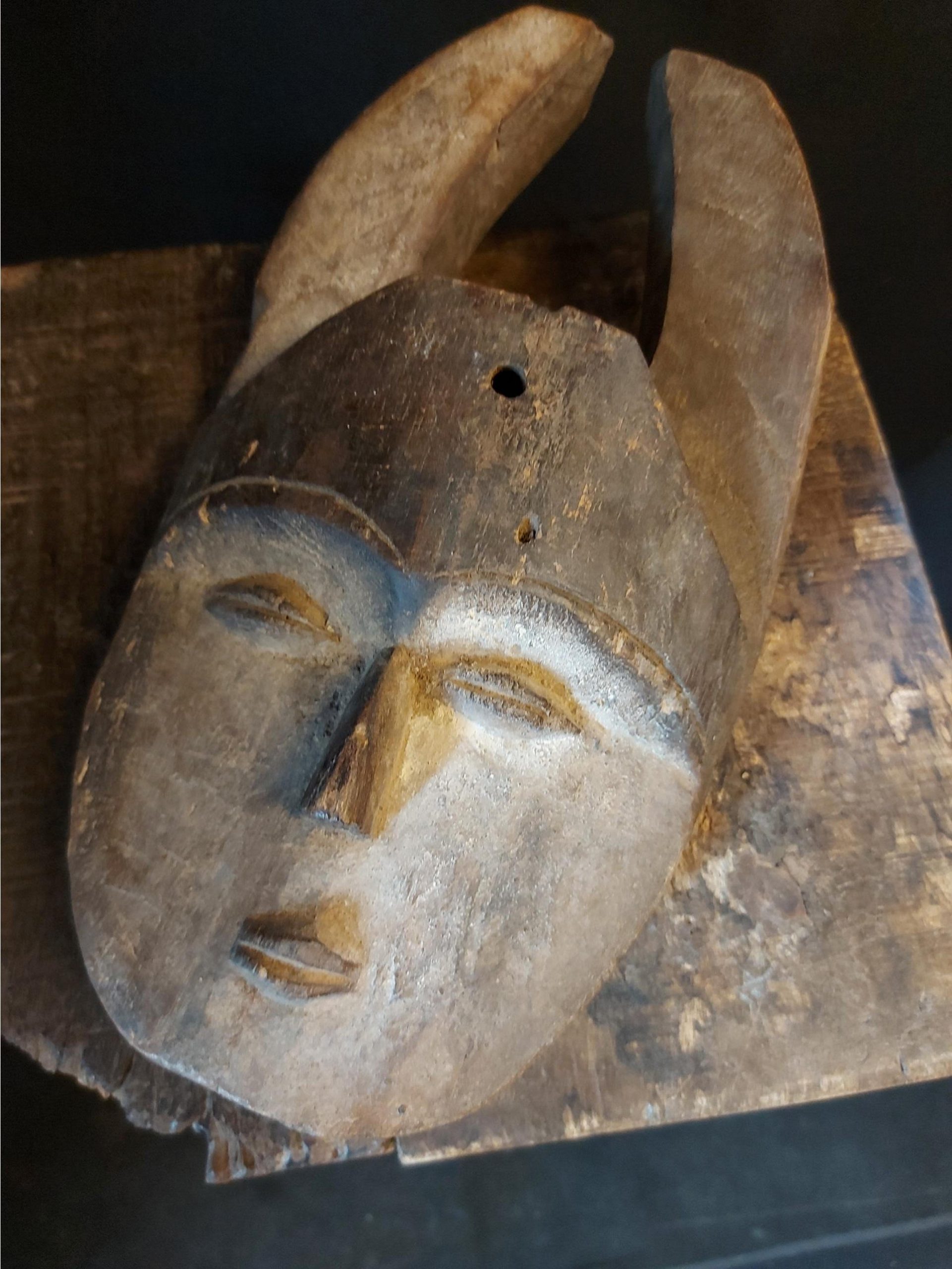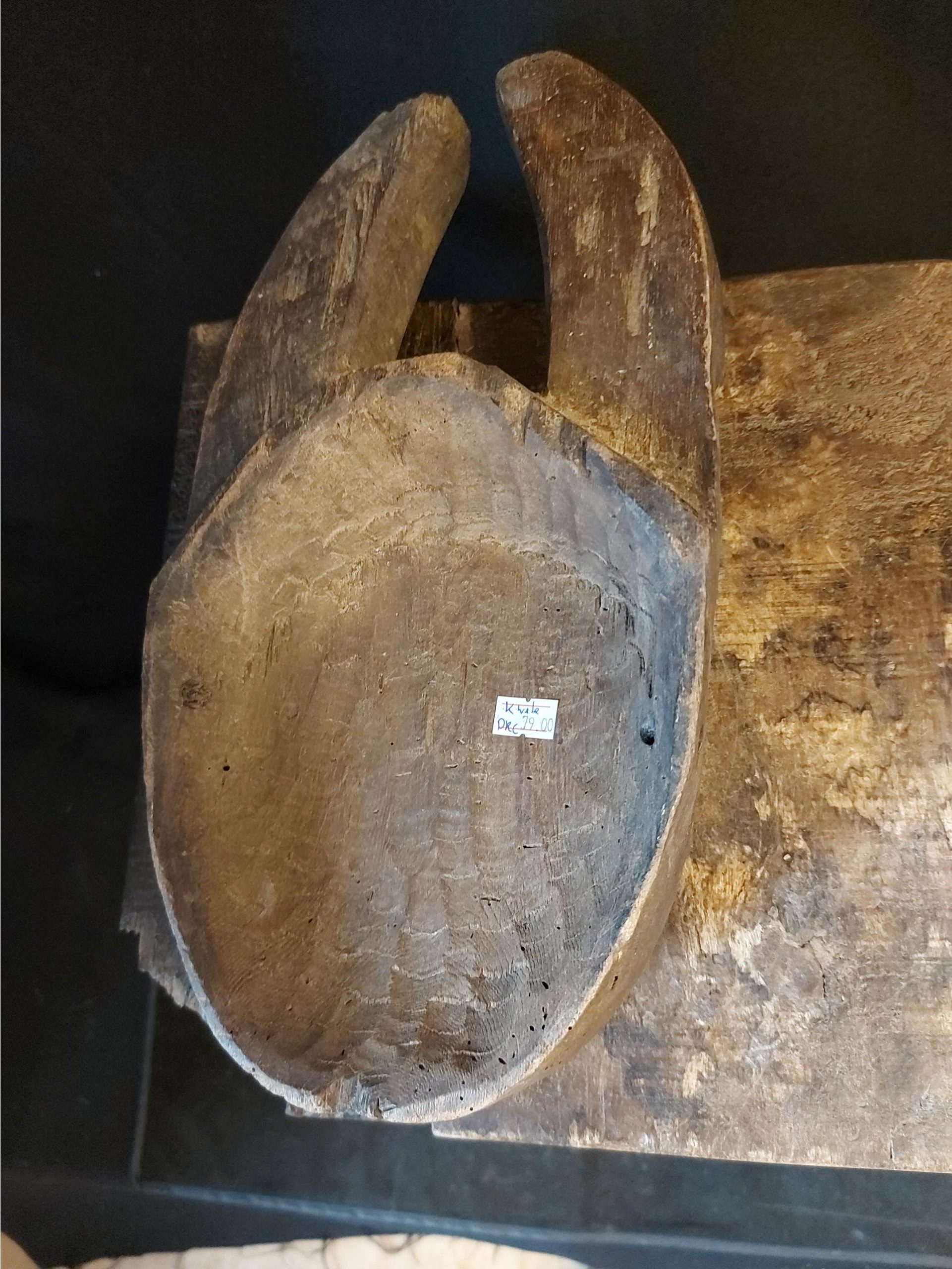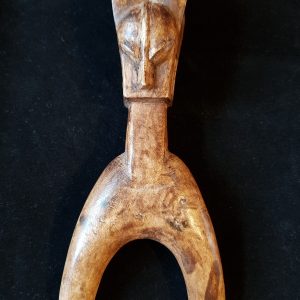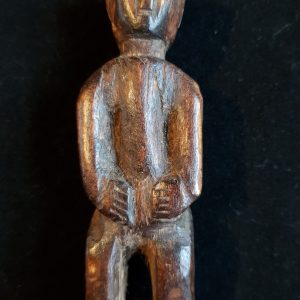Kwele mask from DRC | Masker Congo
€79.00
Kwele masker uit Congo
35 x 20 cm
Kwele mask from DR Congo
Het Kwele-volk is een tribale groep van Oost-Gabon, Republiek Congo en Kameroen in Centraal-Afrika. Ze ontvluchtten het kustgebied van West-Afrika in de 19e eeuw, nadat hun traditionele vijanden vuurwapens hadden verworven van de slavenhandelaren. Deze woordenwisseling wordt vaak de "Poupou" -oorlog genoemd. De Kwele vestigde zich vervolgens in landen tussen de rivieren Dja en Ivindo. De Kwele staan bekend om hun ceremoniële maskers die als kunstvoorwerpen worden verzameld. Deze maskers worden geassocieerd met de Beete-vereniging, die de sociale orde handhaaft, en worden ook gebruikt bij inwijdingsriten en aan het einde van rouwperiodes. Veel maskers hebben geen oogspleten; de maskers worden eerder getoond dan gedragen, en velen zijn beschilderd met witte kaolienaarde, die de Kwele associëren met licht en helderheid. Hoewel ze ook voorwerpen van ijzer vervaardigen, verwierven ze vooral hun bekendheid door hun sculpturen, maskers en antropomorfe, zoömorfe en zelfs antropozoomorfe beeldjes.
The Kwele people are a tribal group of eastern Gabon, Republic of the Congo, and Cameroons in Central Africa. They fled the coastal area of West Africa during the 19th century, after their traditional enemies acquired firearms from the slave traders. This altercation is often called the "Poupou" war. The Kwele then settled into lands between the Dja and Ivindo rivers. The Kwele are noted for their ceremonial masks which are collected as art objects. These masks are associated with the Beete association, which maintains social order, and are also used in initiation rites and at the end of mourning periods. Thought to represent benevolent forest spirits, the masks represent people or animals, or a combination of the two. Many lack eye slits; the masks are shown rather than worn, and many are painted with white kaolin earth, which the Kwele associate with light and clarity. In the beete ritual which they perform, there is a gorilla masked person (Gabon) as the opposition to the Ekuk mask. Although they fashioned objects in iron, it is above all through their sculptures, masks, and anthropomorphic, zoomorphic, and even anthropozoomorphic statuettes that they gained their fame. Their masks are recognized by their great simplicity, in a concentrated and analytical expression.





